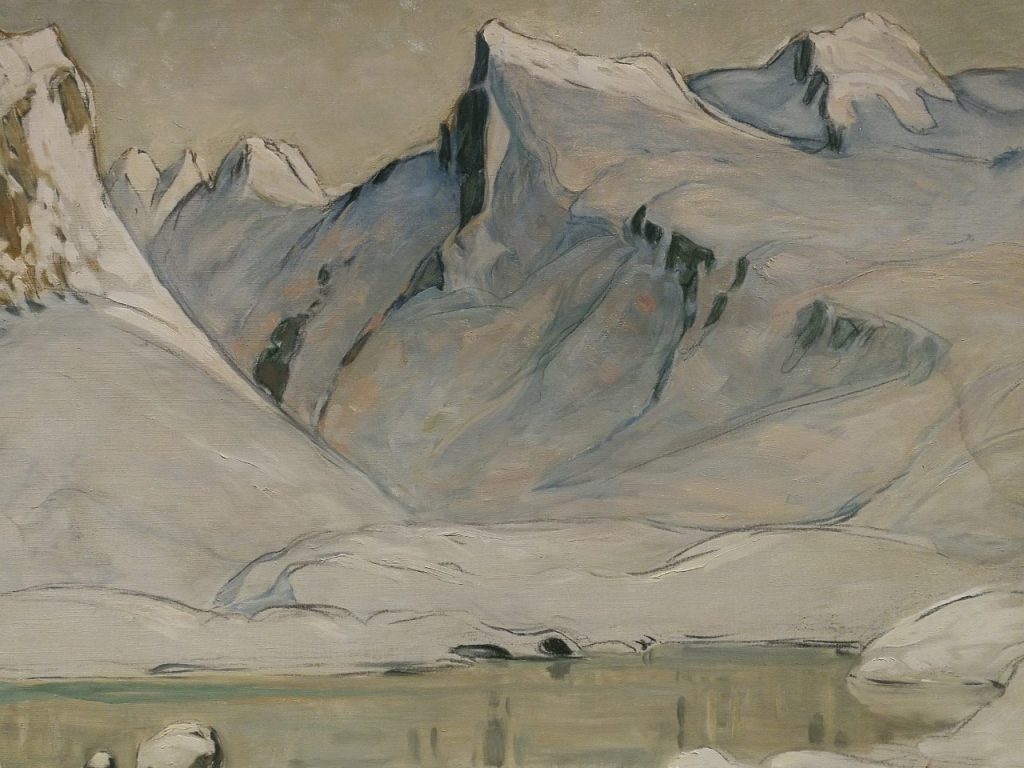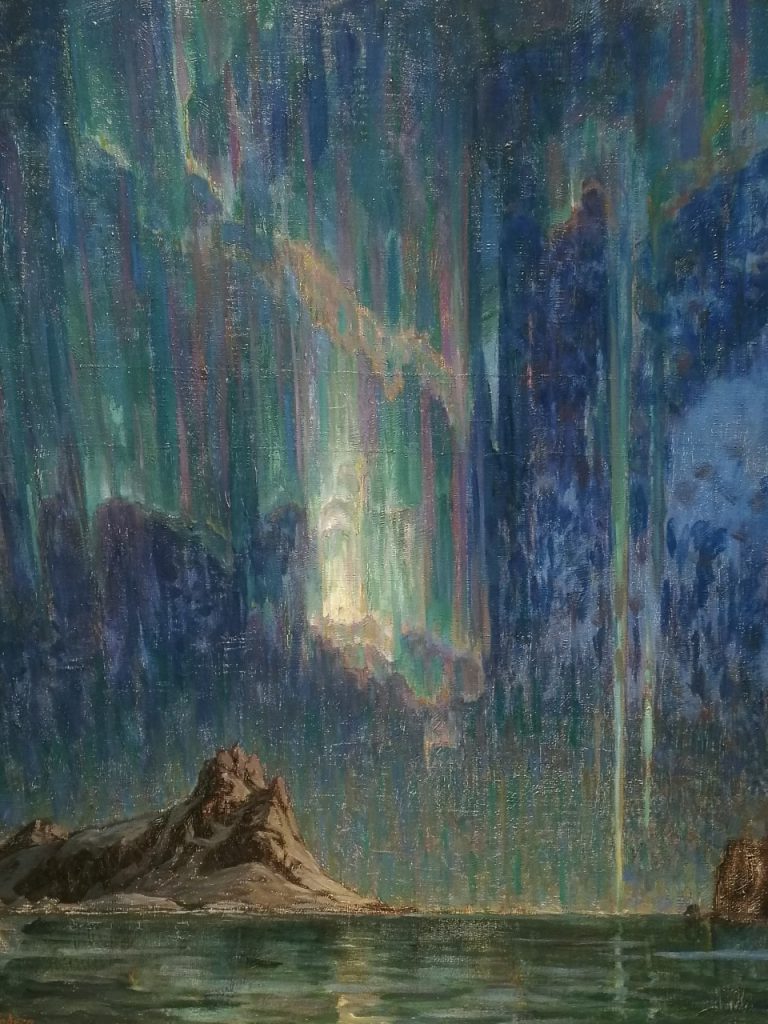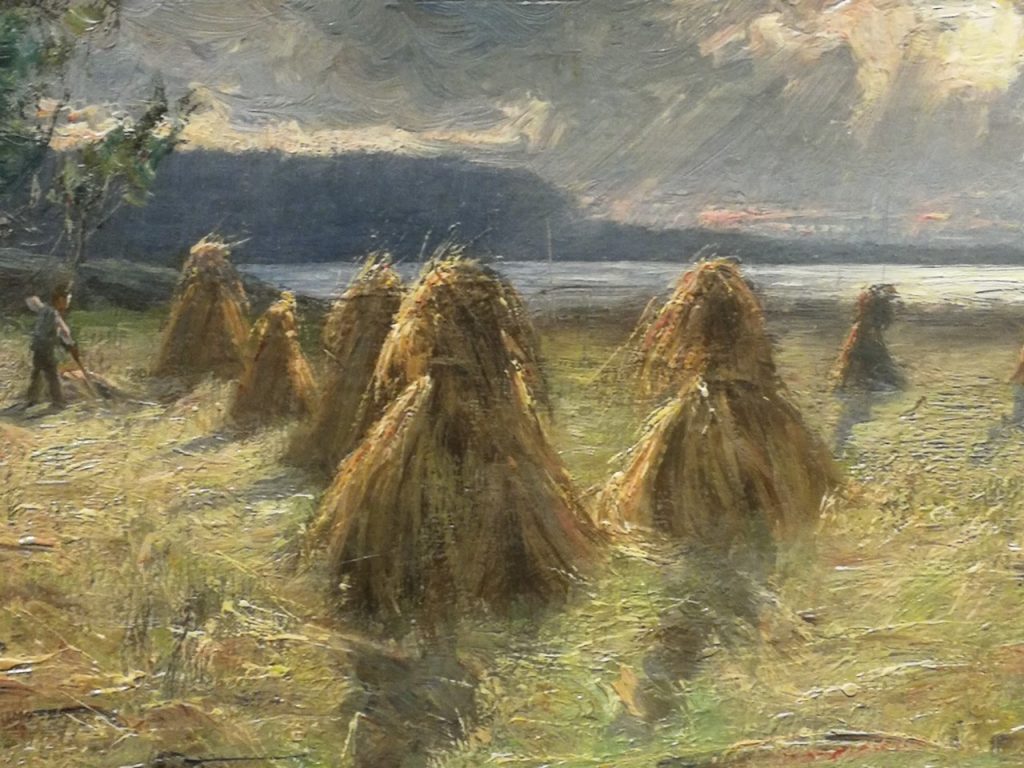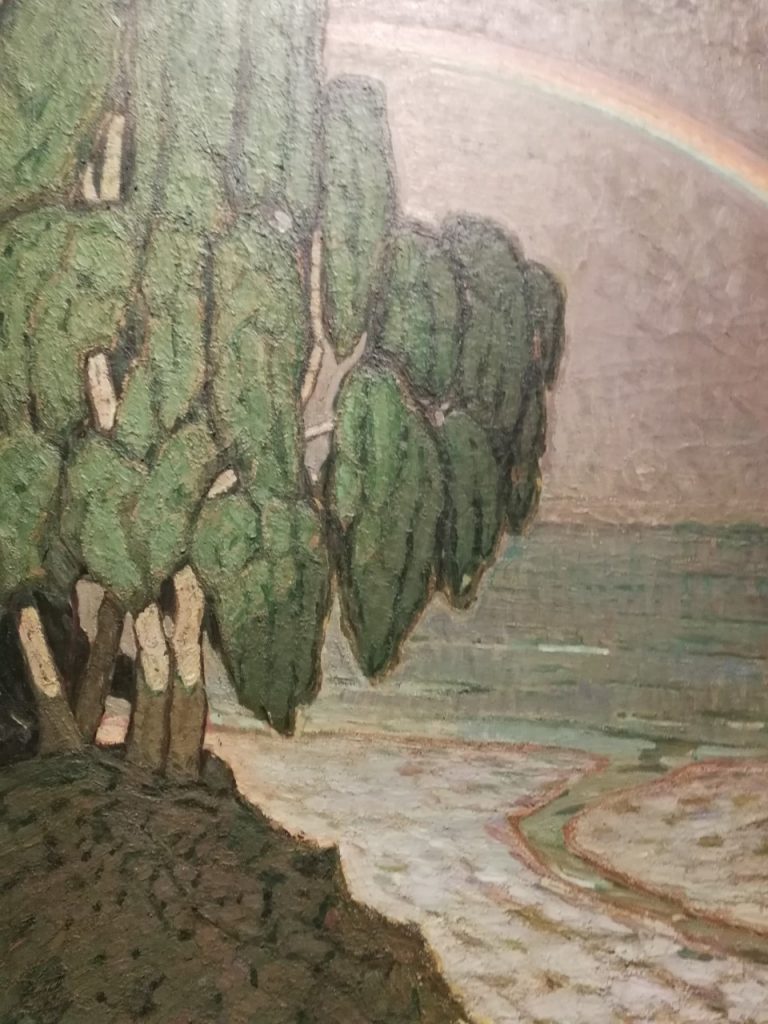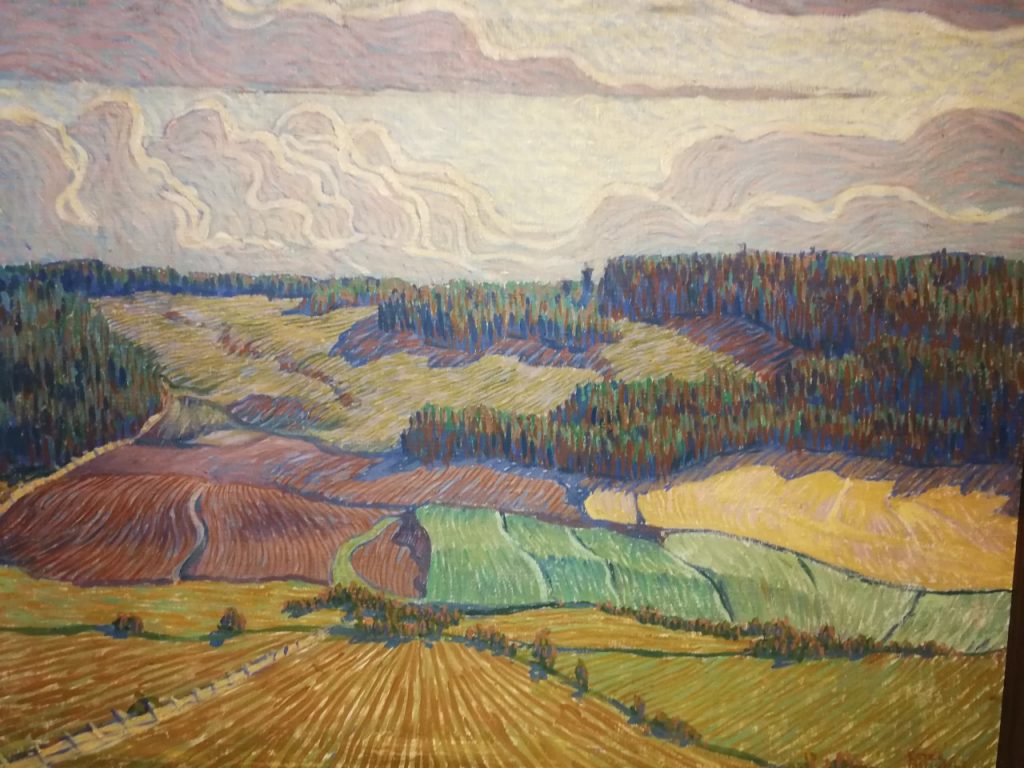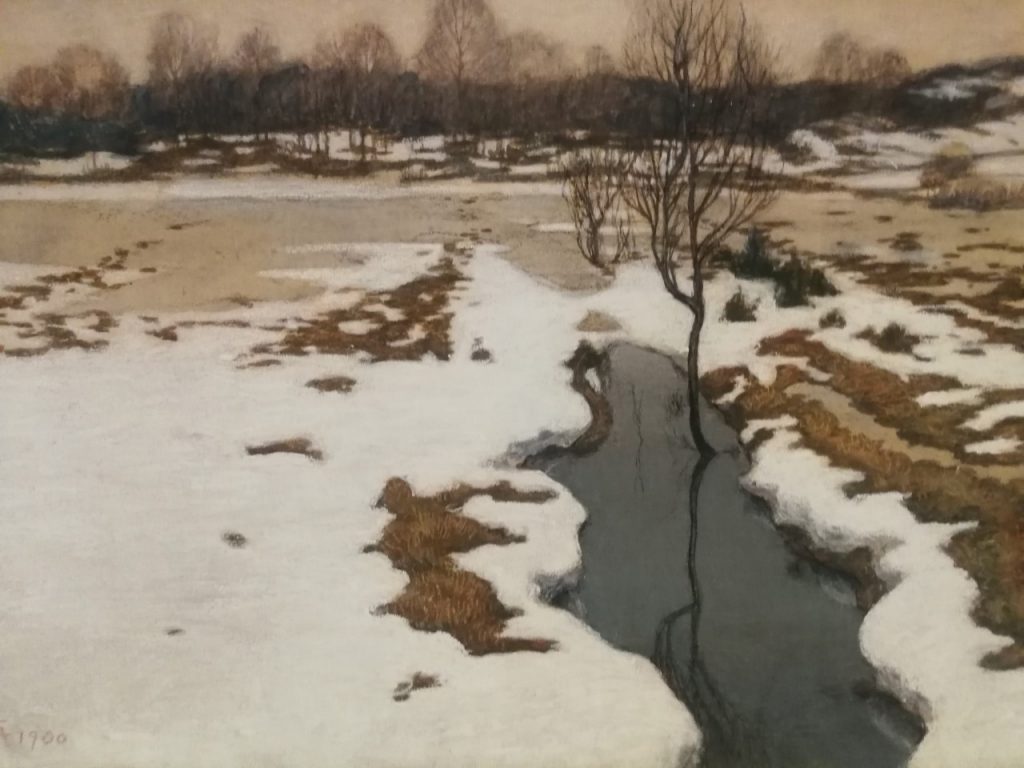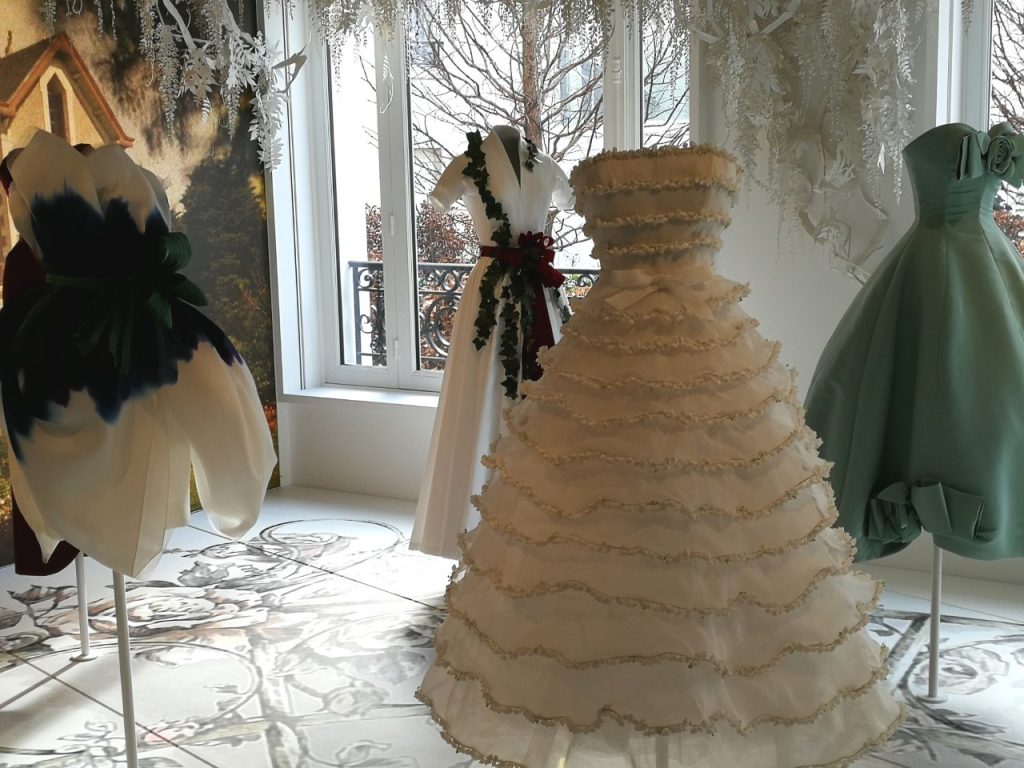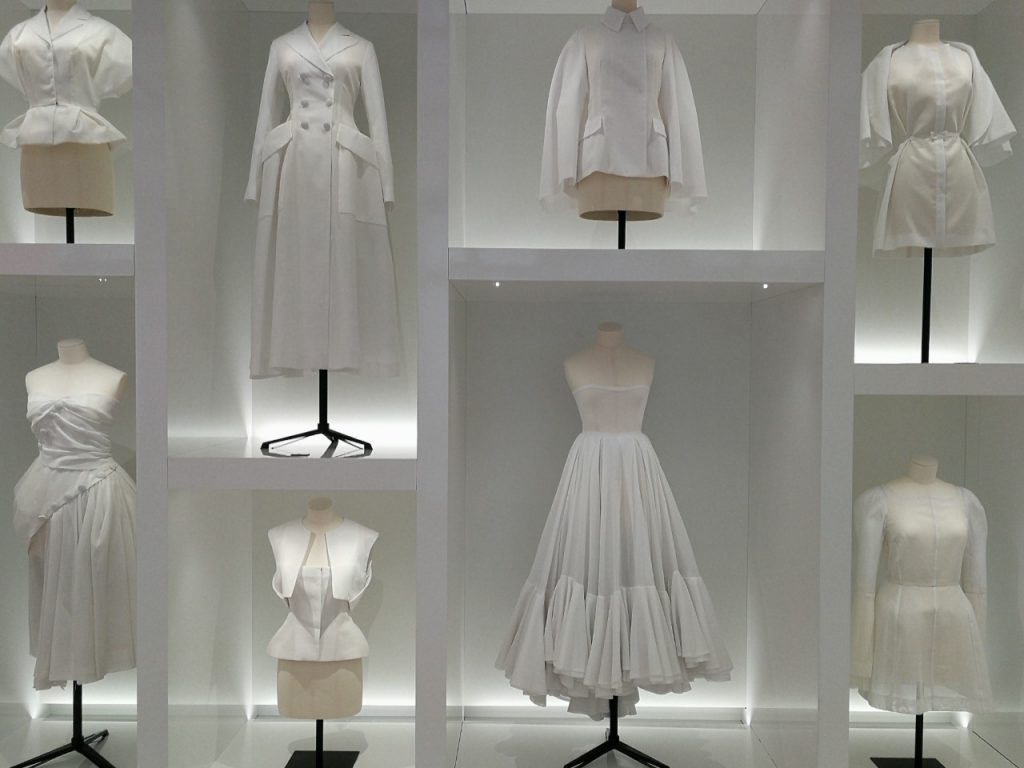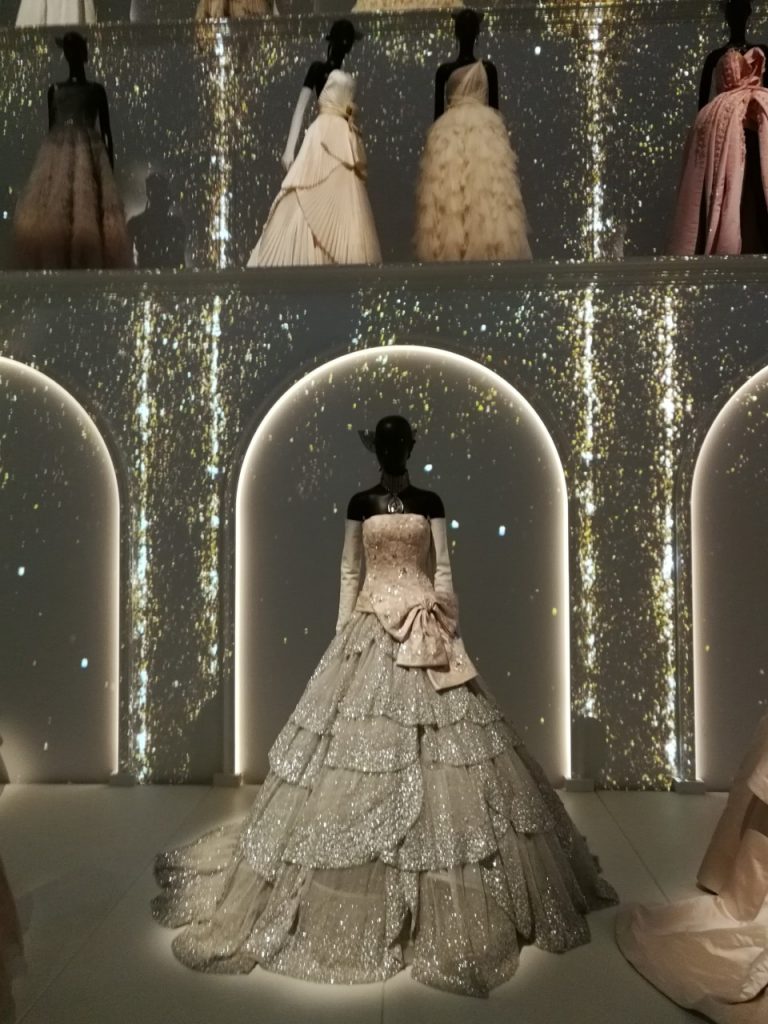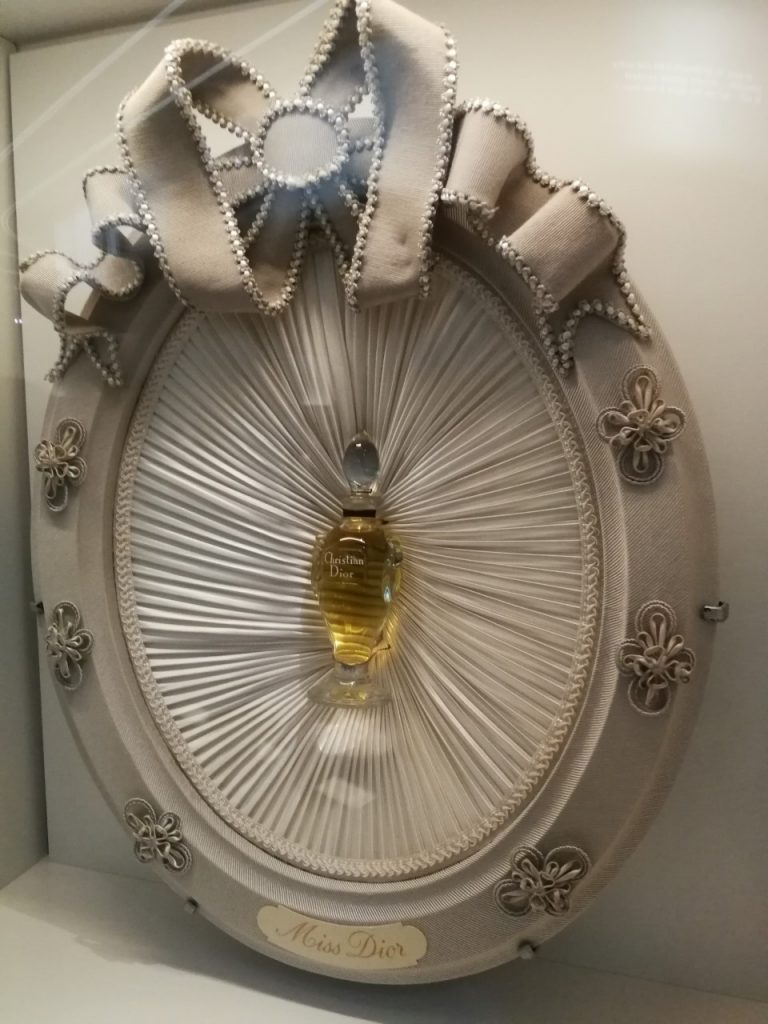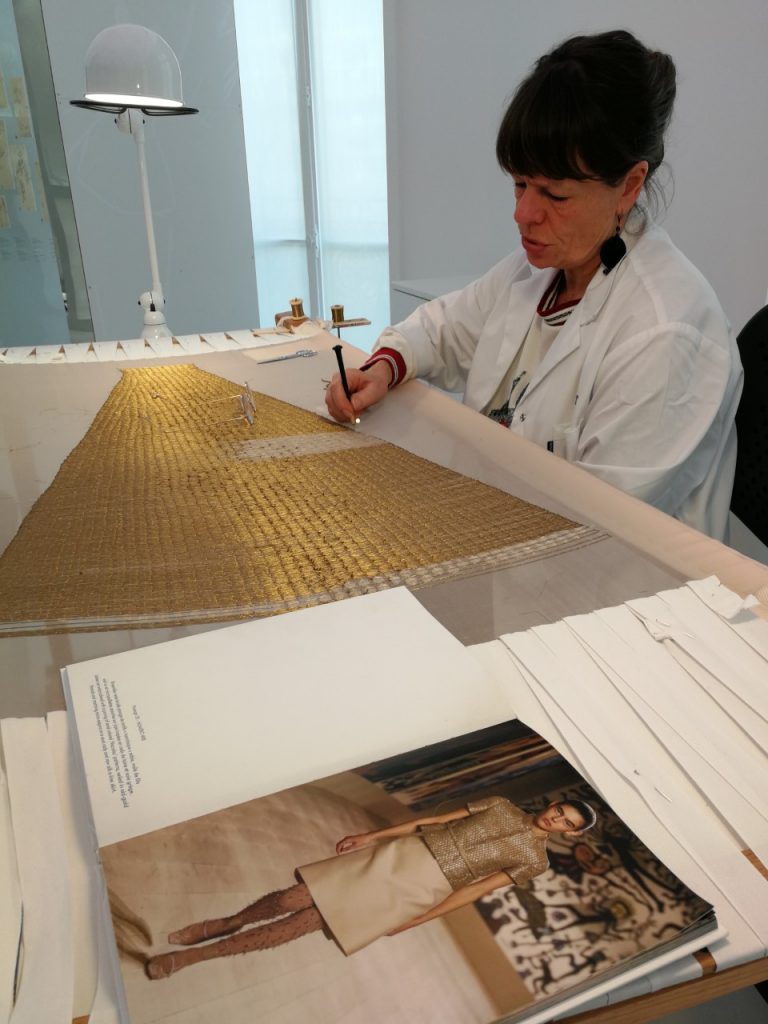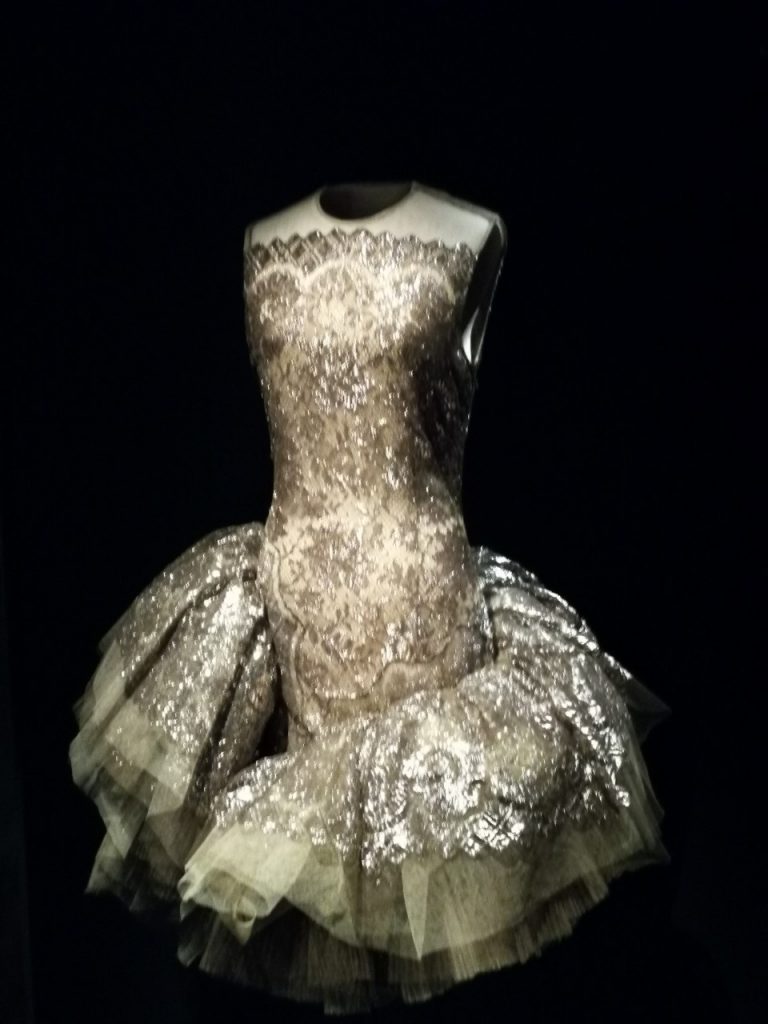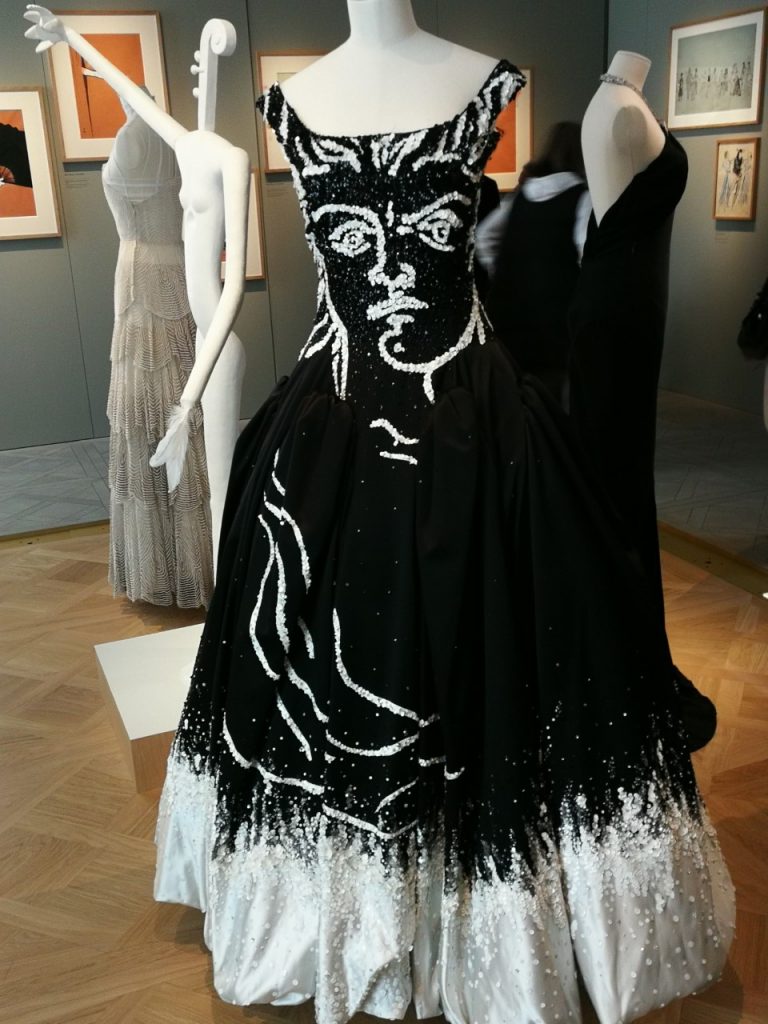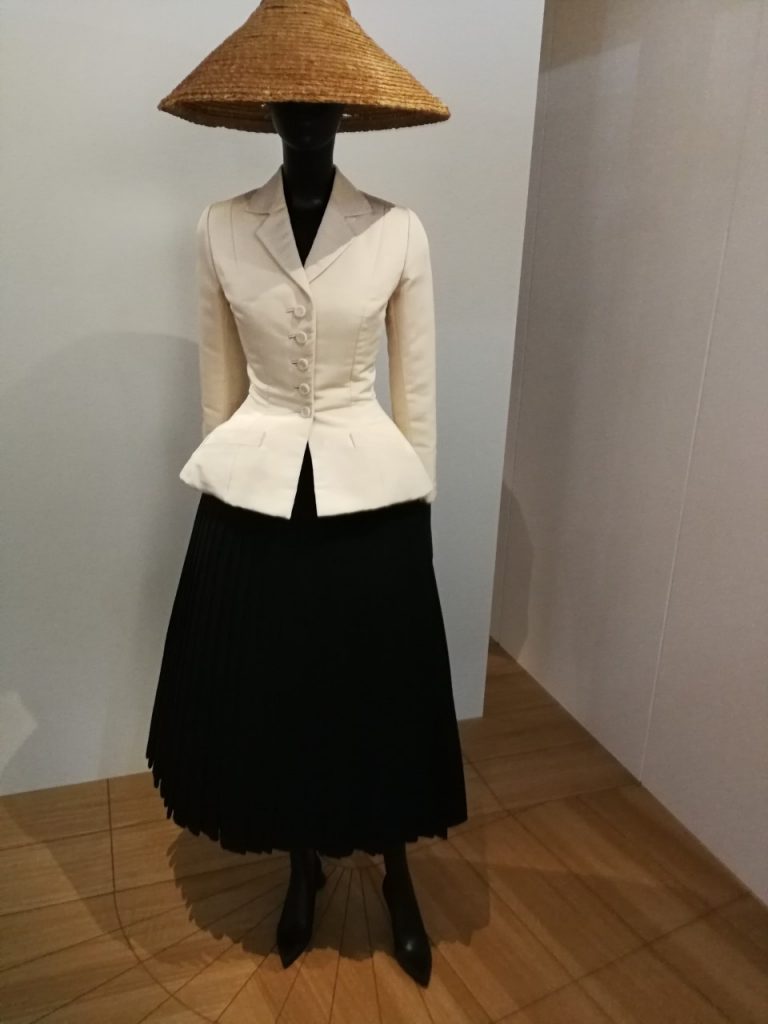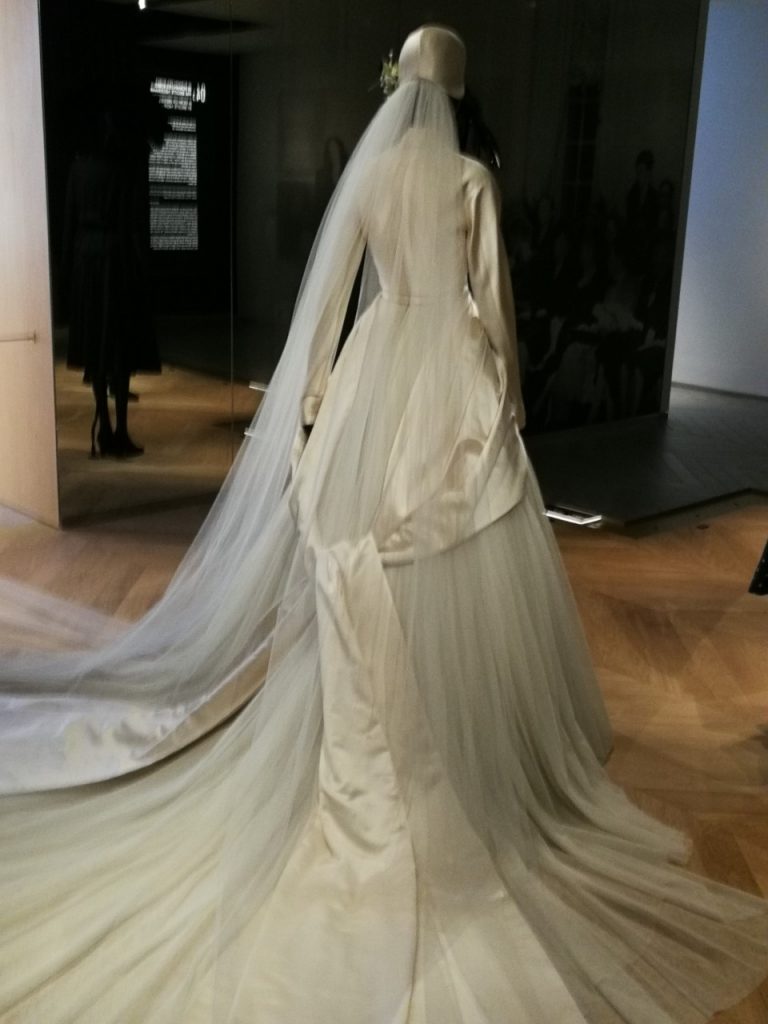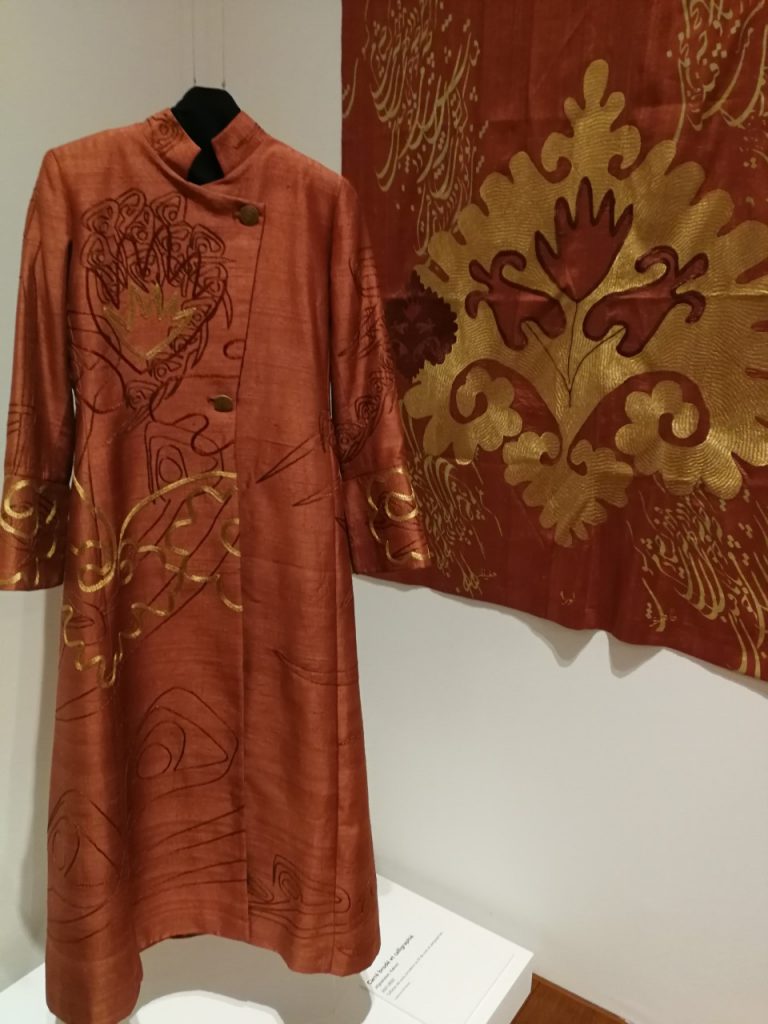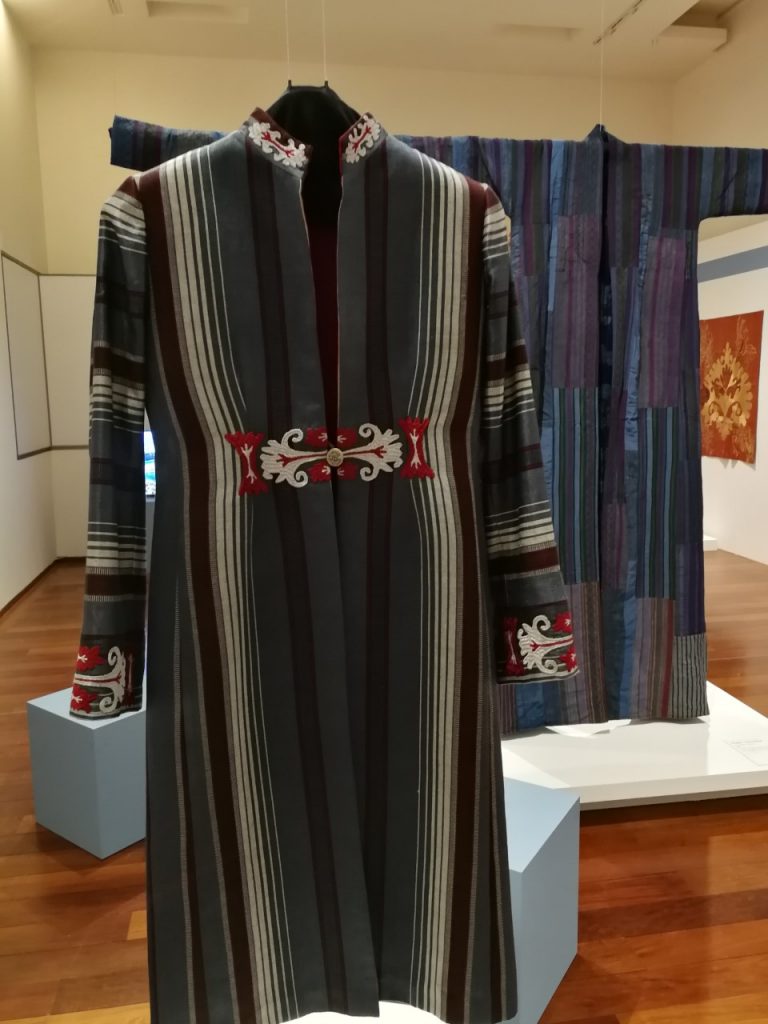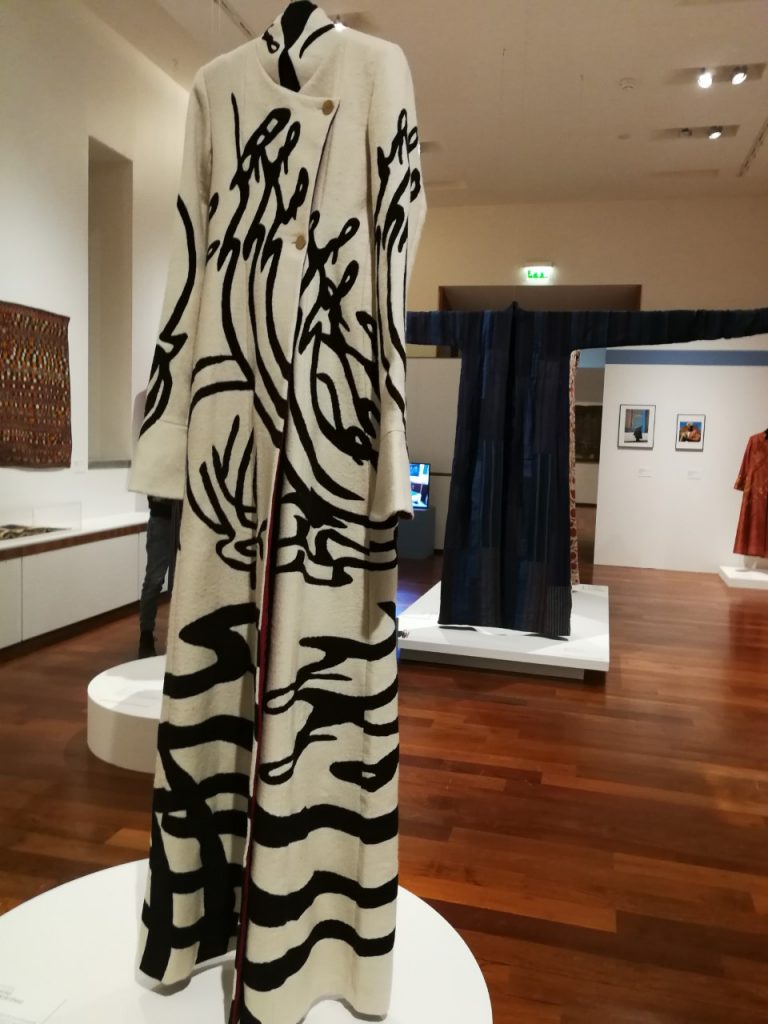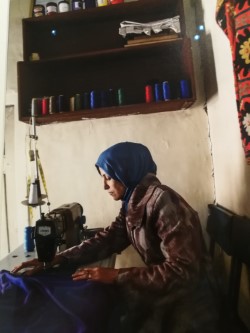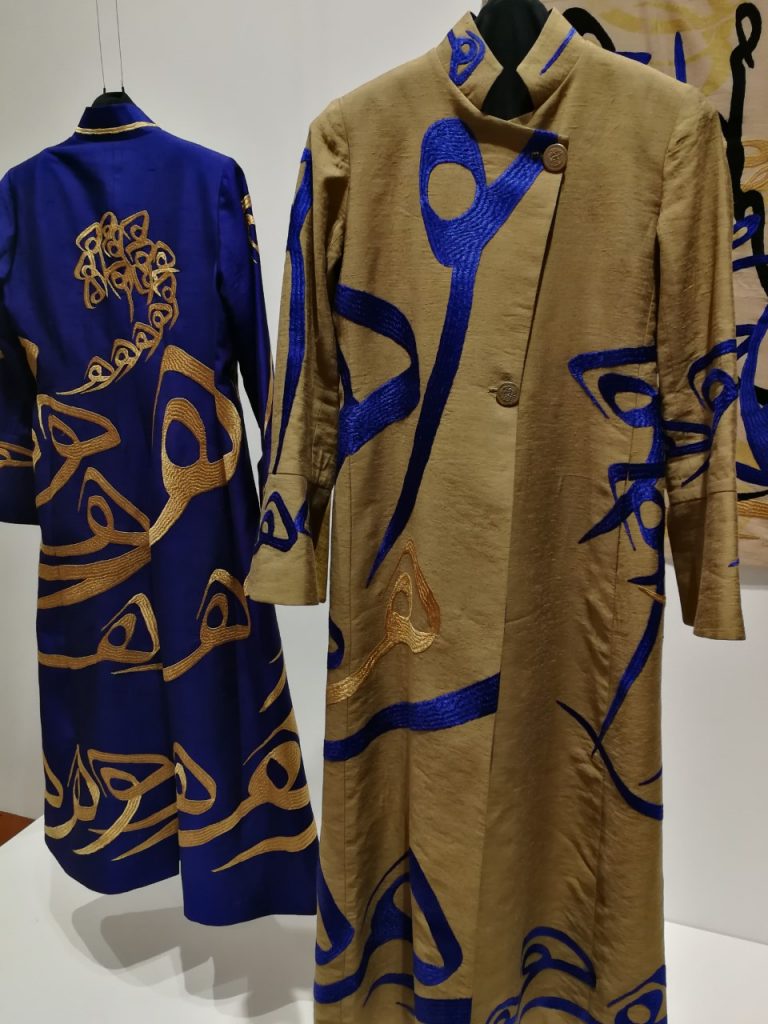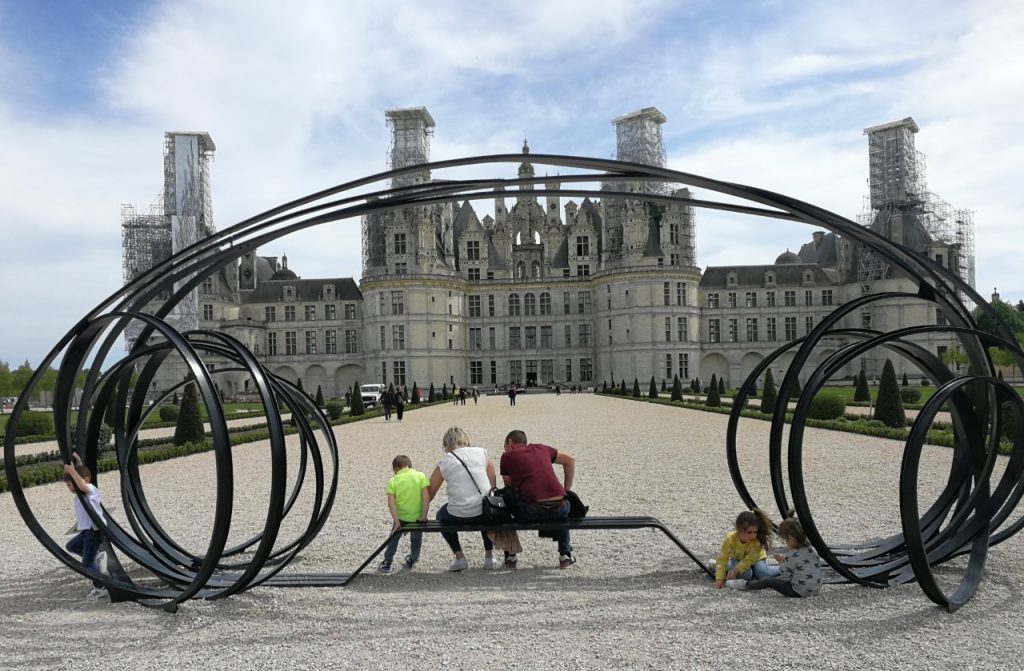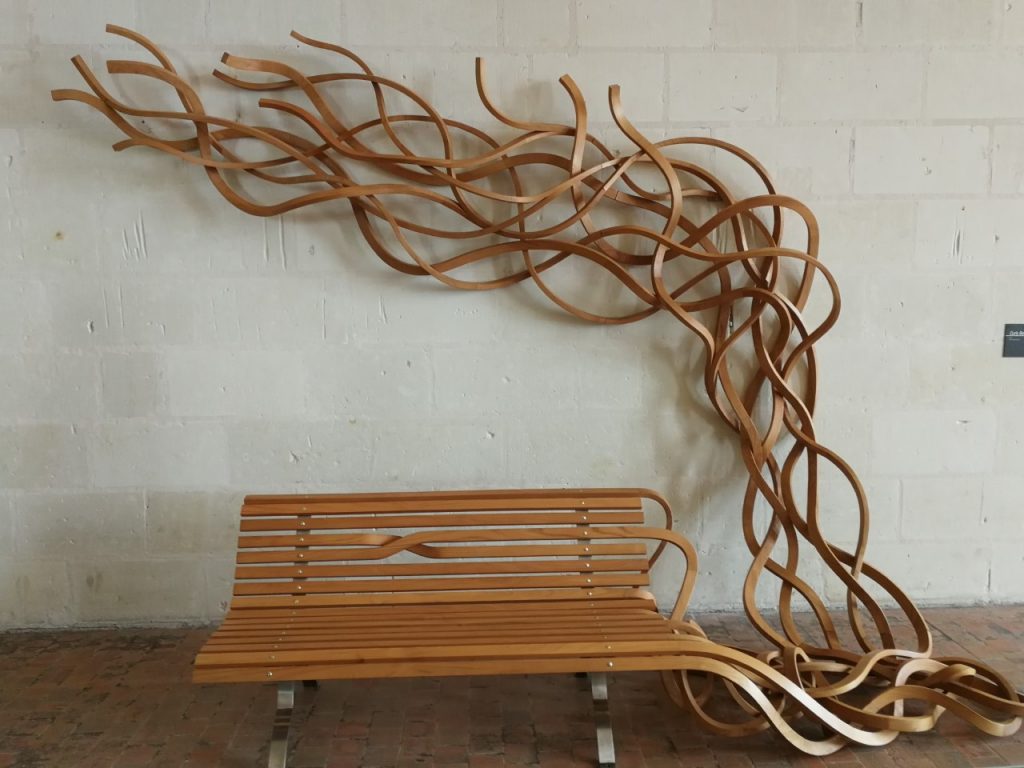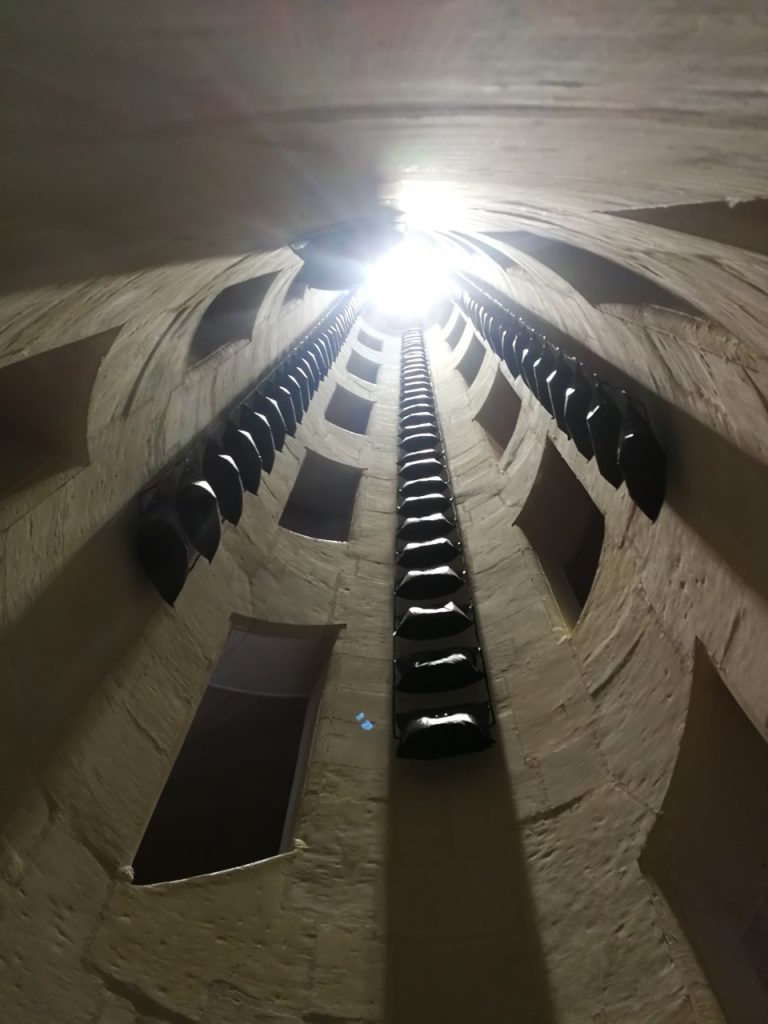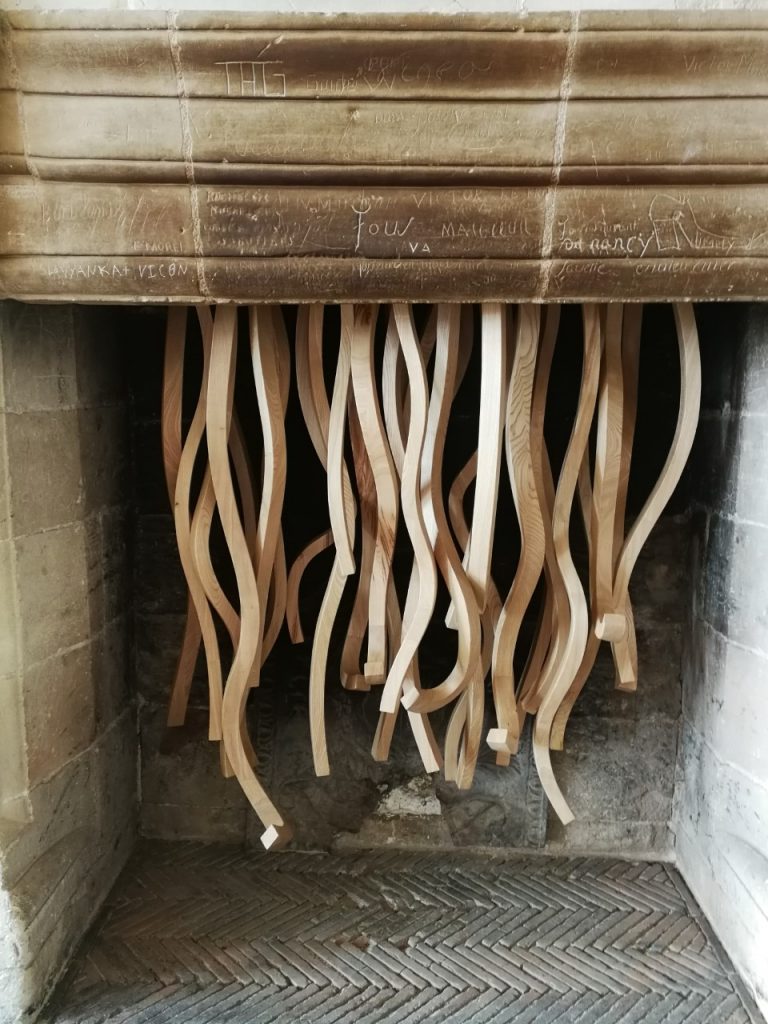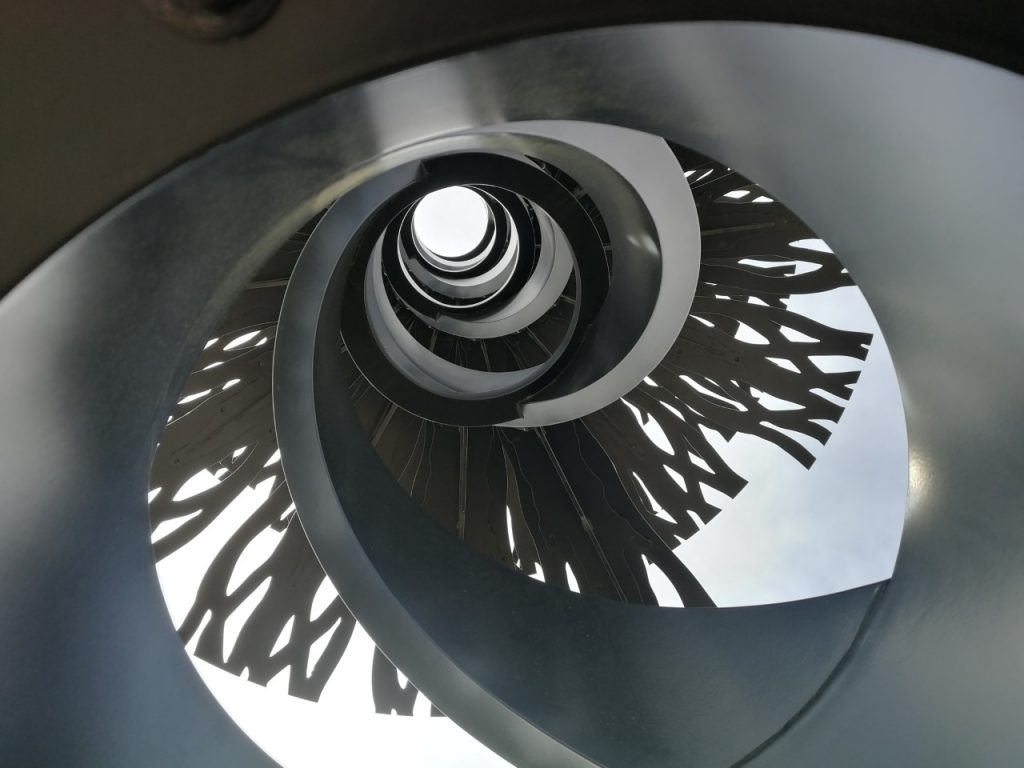From ocean and cosmos to fashion
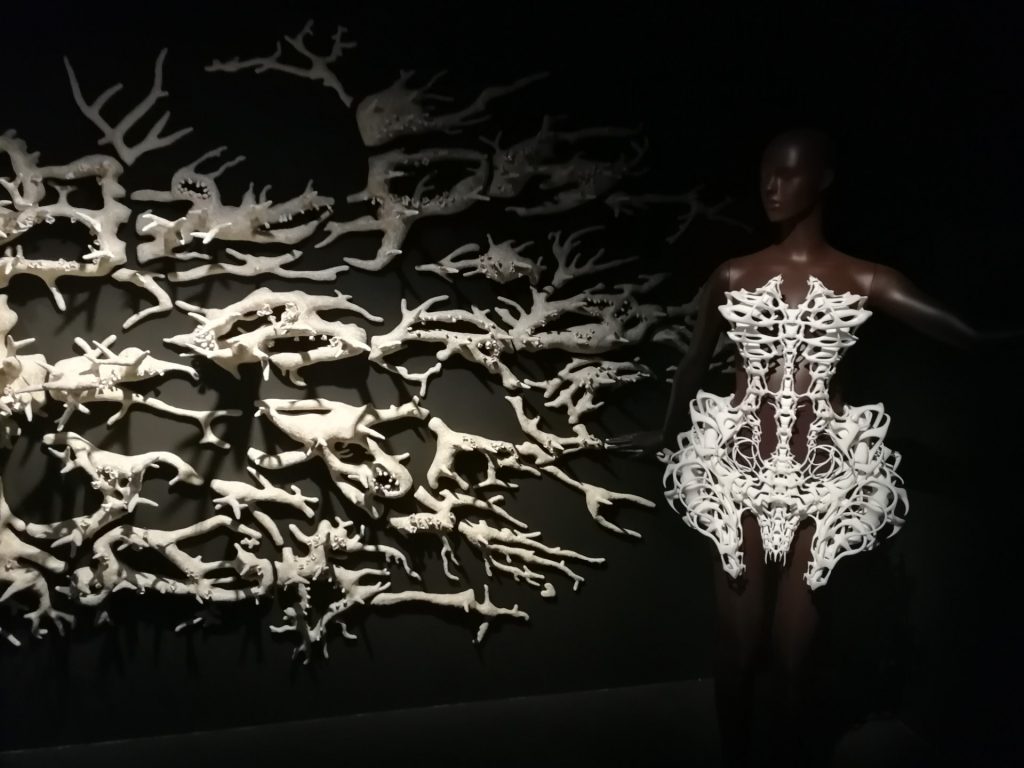
This extraordinary exhibition – called sculpting the senses – at Musée des Arts Décoratifs, in Paris, is more than just fashion. This Dutch haute couture designer mixes her works with contemporary art, videos, and sculptures. Walking into this mystical world, the visitor is accompanied by Salvador Breed’s electronic sounds.
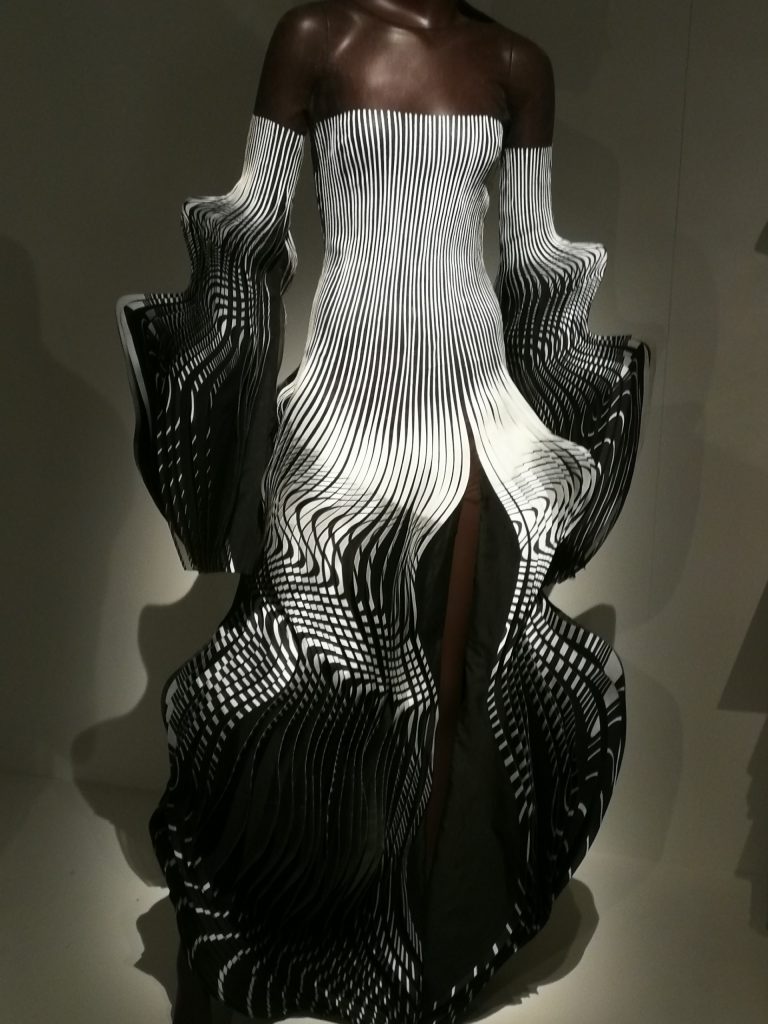
Iris van Herpen’s interest in classical dance is apparent in the movement of her clothes, as is her interest for all living creatures, especially those in the ocean – corals, fishes, and crabs – as well as for the cosmos and its vastness. The scenographer has truly followed her ideas in a magical way. Diving into her world, was like viewing a science fiction movie in 3 D.
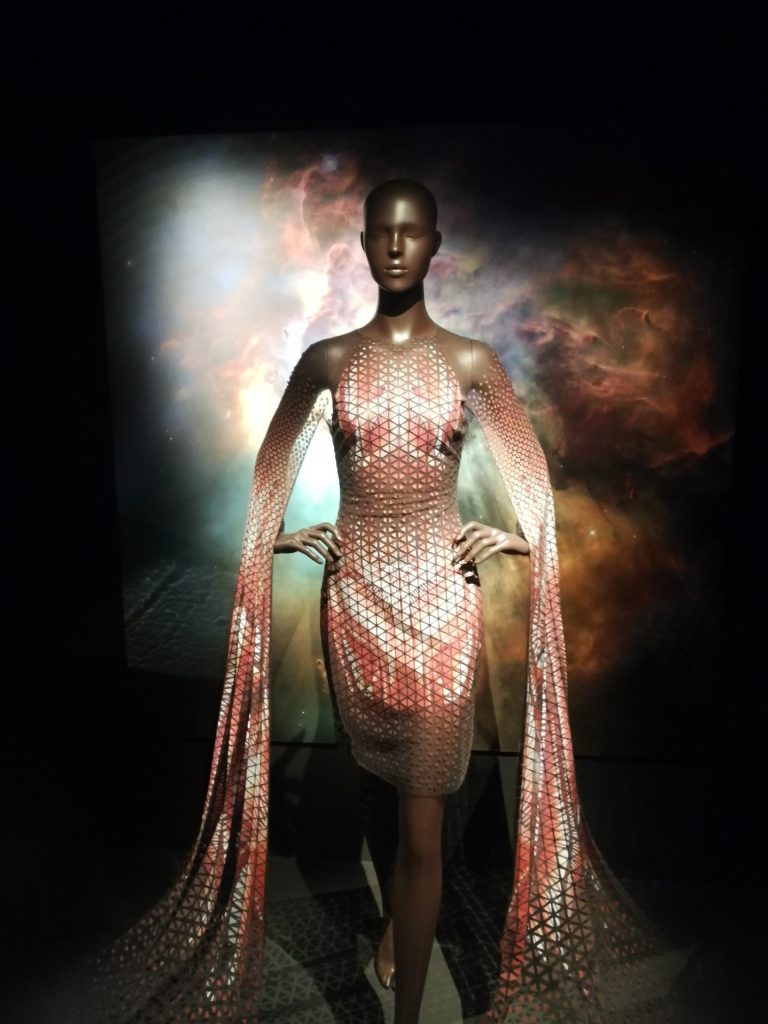
This retrospective of around one hundred pieces of haute couture, is divided into different themes: from the microscopic to the macroscopic. Water is but one of these. Its metamorphous from liquid to solid is craftily exemplified using different techniques, and shown in the form of crystals, blown glass, plexiglass, and laser- artworks. From under the ocean’s surface, the visitor is flung to its bottom via creations inspired by planktons, strange fishes and even skeletons! Macramé works are mixed with intricate Japanese paper works, origami. Feathers, scissored, transparent, plissé, airy… these clothes seemed, although amazing to look at, impossible to wear. That was until I discovered photographs of famous people, such as Madonna, Beyoncé, Natalie Portman, and Cate Blanchett, among others, beautifully dressed in them.
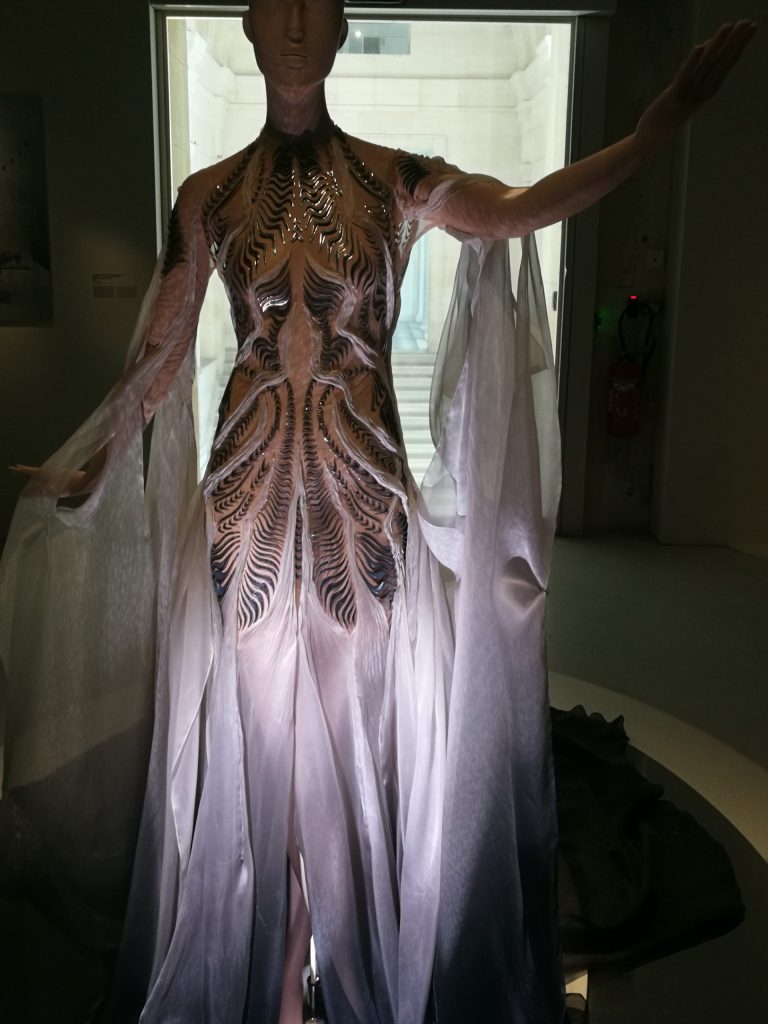
The upper floor of this ancient museum shows Iris van Herpen’s way of working in her atelier, using different materials to produce her outfits, along with a video. Otherwise, it is mostly consecrated to her devotion to the cosmos. The exhibition is so overwhelming that it requires several hours to see in order to take in everything, from the art works to the fashion designs. It’s like walking in a fantasy world, Alice in Wonderland, although she’s inspired by our wonderous planet and the creations that inhabit it. It leads to reflection about the importance of caring for our precious earth.
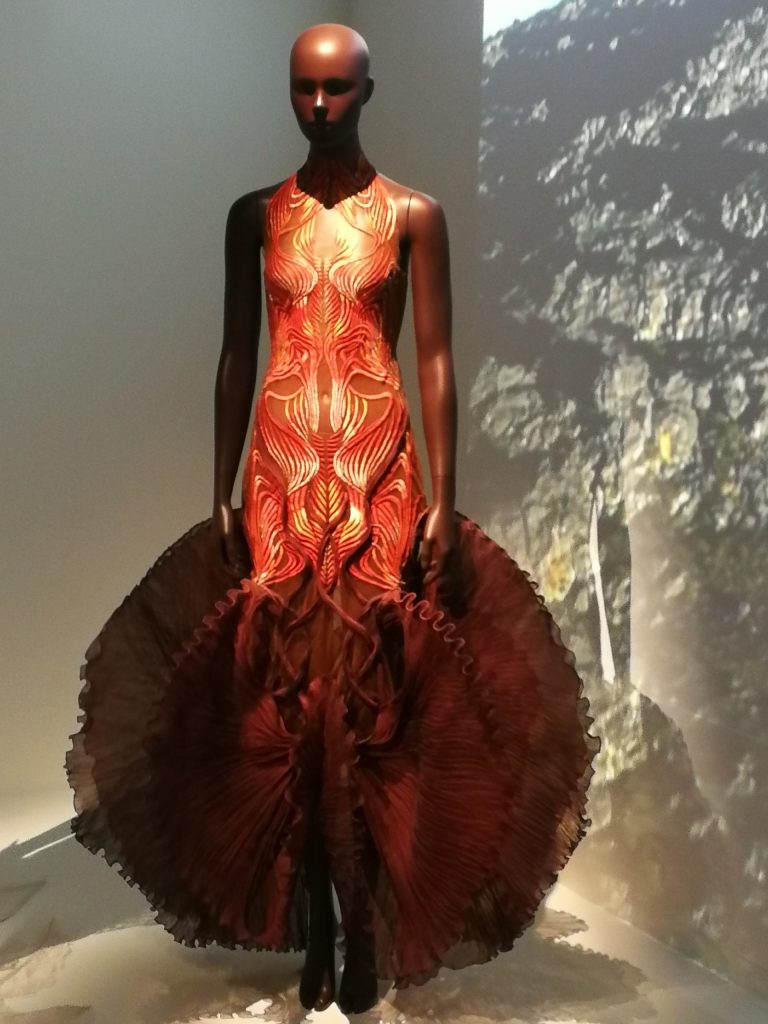
Iris van Herpen isn’t only an haute couture designer with an incredible imagination, she’s also eco-friendly with an interest in nudging us to take better care of the eco-system. It’s also a dip into a future with new techniques and materials that can be used to make fashion in a new and more sustainable way. Anyone interested in haute couture, contemporary art, dance, modern techniques, nature’s wonders, and cosmos mysteries, should hurry up to come to Paris to see this fabulous exhibition!
Anne Edelstam, Paris.
Iris van Herpen
Sculpting the scenses
Musée des Arts Décoratifs (MAD)
Paris
29 November 2023 – 28 April 2024

